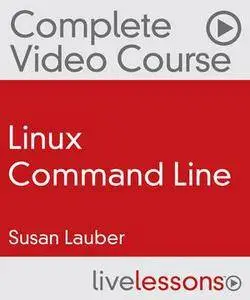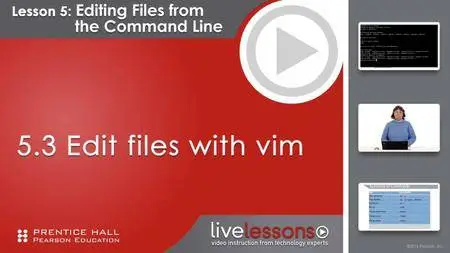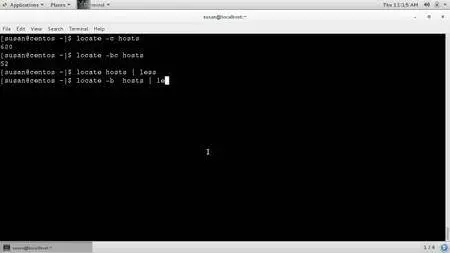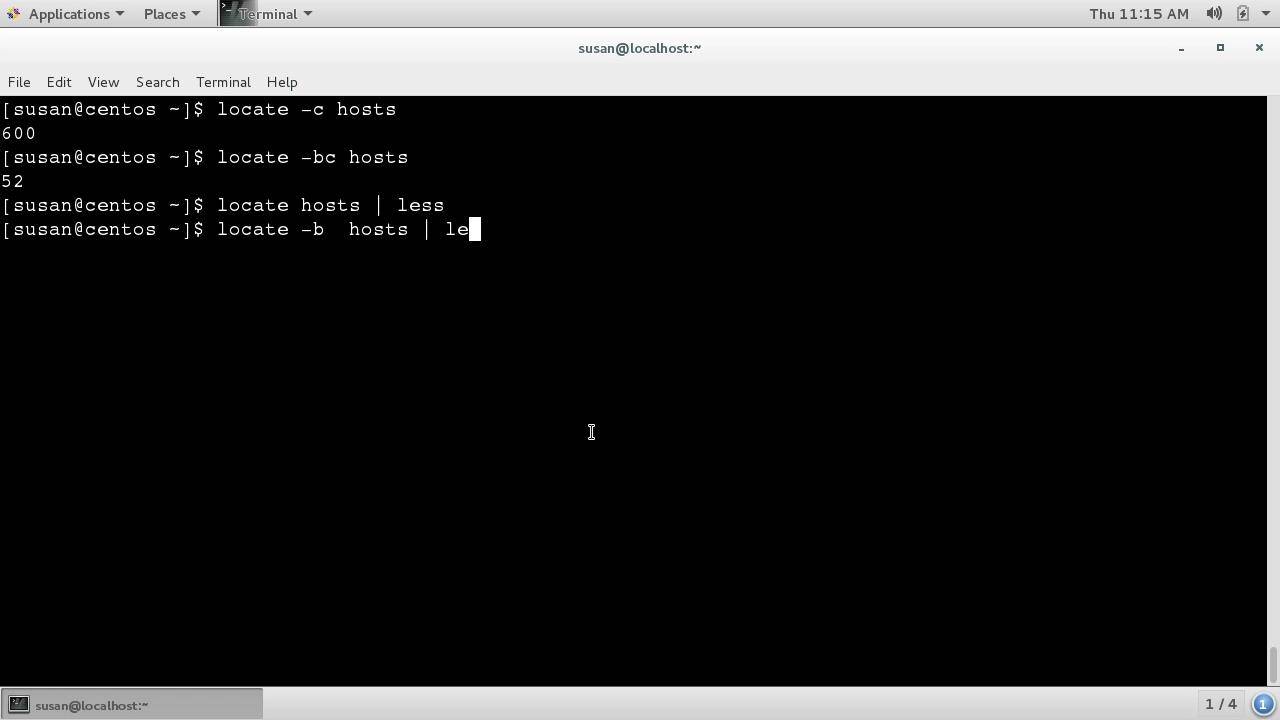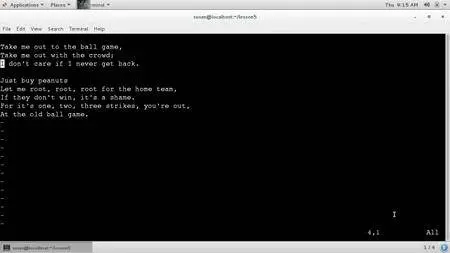Linux Command Line
English | April 2016 | ISBN: 9780134445533 | mp4 | H264 1280x720 | AAC 2 ch | 5+ hrs | 2.44 GB
eLearning | Linux | Skill Level: Beginner
English | April 2016 | ISBN: 9780134445533 | mp4 | H264 1280x720 | AAC 2 ch | 5+ hrs | 2.44 GB
eLearning | Linux | Skill Level: Beginner
The Linux Command Line Interface (CLI) is a powerful tool for users, developers, and administrators. Quick changes to a system with no Graphical Interface such as many servers or some recovery tasks, can be accomplished with command line tools. Repetitive tasks such as file management and local access control changes can be dome more efficiently from the command line than through a point and click interface. Learning to use the Linux CLI also prepares for full automation with scripting tools.
Linux Command Line Complete Video Course introduces common utilities used at the Linux command line. While learning commands for specific tasks, you will obtain greater confidence navigating the Linux filesystem, understand how to locate and edit files, use Bash shell features for efficiency and automation, and be able to use built-in help for further exploration.
About the Instructor
Susan Lauber has over 20 years experience in Information Systems from data analyst to network operating systems support to curriculum design. She currently focuses on training and consulting in just about anything OpenSource and holds all positions in her own company, Lauber System Solutions, Inc. Susan has a Masters in Information Science from the University of North Carolina, Chapel Hill and is a Certified Information Systems Security Professional (CISSP) and a Certified Technical Trainer (CTT). She is an independent instructor for both Cloudera, Inc. and Red Hat, Inc. holding an alphabet of certifications in those products including CCAH, CCSHB, RHCA, RHCSS, RHCVA, RHCE, and RHCX. She is also a Fedora Ambassador and contributes to OpenSource projects mostly by way of documentation and QA processes.
What You Will Learn:
- Obtain greater confidence navigating the Linux filesystem.
- Be able to locate and edit files from the Linux command line.
- Use Bash shell features for efficiency and automation.
- Be able to use built in help for further exploration.
Who Should Take This Course
- New users of the Linux command line.
- System administrators with limited command line experience or developers more comfortable with an IDE.
Course Requirements
- General System Administration experience, preferably with Linux System Administration experience, but not required.
- An understanding of files versus directories and why access control is important.
Introduction
Linux Command Line: Introduction
Lesson 1: Accessing the Linux Command Line Interface
Learning objectives
1.1 Understand the uses of the Linux command line interface
1.2 Access the command line locally: Text login
1.3 Access the command line locally: GNOME menus (CentOS)
1.4 Access the command line locally: GNOME Shell (Fedora)
1.5 Access the command line locally: KDE (Kubuntu)
1.6 Access the command line remotely: ssh command (Linux or Mac OSX)
1.7 Access the command line remotely: Graphical program
1.8 Run commands from the bash shell
1.9 Bash tip: Recall previous commands with history shortcuts
Lesson 2: Getting Help Within the System
Learning objectives
2.1 Use the man pages
2.2 Navigate the info pages
2.3 View syntax with –help
2.4 Identify available documentation with whatis and man -k
2.5 Bash tip: Interpret usage syntax
Lesson 3: Manipulating Files
Learning objectives
3.1 Understand navigation
3.2 Read files
3.3 Organize files
3.4 Bash tip: Less typing with TAB completion
Lesson 4: Managing a Large Number of Files
Learning objectives
4.1 Use filename-expansion wildcards to organize files
4.2 Archive files with tar and gzip
4.3 Transfer files to or from a remote system with scp and rsync
4.4 Download files from a remote system with wget or curl
4.5 Bash tip: Use echo to preview command expansion
Lesson 5: Editing Files from the Command Line
Learning objectives
5.1 Choose an editor
5.2 Edit files with nano
5.3 Edit files with vim
5.4 Advanced edits with vim and sed
5.5 Bash tip: Set the default editor
Lesson 6: Access Control: Basic File Permissions
Learning objectives
6.1 View basic permissions
6.2 Identify owner and group membership
6.3 Escalate privilege with su and sudo
6.4 Change file permissions
6.5 Change file owner and group
6.6 Bash tip: String commands together
Lesson 7: Locating Files on the System
Learning objectives
7.1 Use locate to find files by name
7.2 Use find to locate files by name, date, owner, size, and more
7.3 Identify text files containing a specific string using grep
7.4 Search the content of a file for patterns
7.5 Bash tip: Protect special characters with quotes
Lesson 8: Process Management
Learning objectives
8.1 List processes running on a system
8.2 Manage a running process
8.3 View available system resources
8.4 Save the output of a command to a file
8.5 Bash tip: Use command substitution
Lesson 9: Basic bash Shell Configuration
Learning objectives
9.1 Create shortcuts with alias
9.2 Customize environment variables
9.3 Configure shell options
9.4 Save configuration by editing login and shell startup scripts
Summary
Linux Command Line: Summary
Screenshots:


